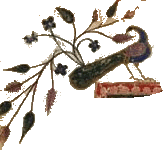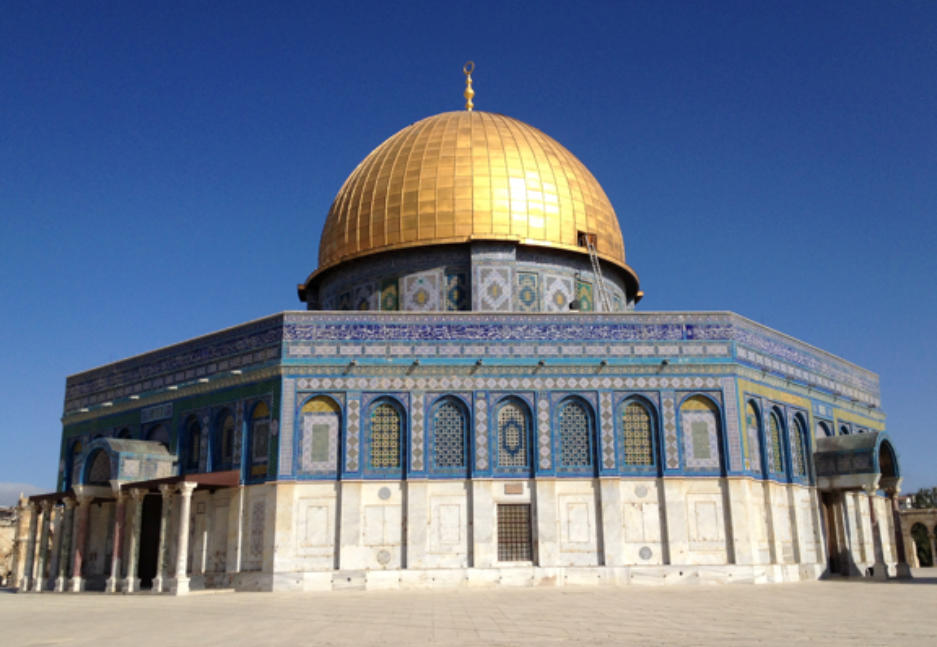


Photo

I
was
very
happy
to
see
your
Armenian
Jerusalem
website
and
a
page
devoted
to
Armenian
ceramics.
I
am
the
granddaughter
of
David
Ohannessian,
who
founded
this
tradition
in
Jerusalem
in
1919.
For
the
last
6-7
years,
I
have
been
researching
his
life
and
work,
in
archives
and
through
travel,
and
am
currently
writing
his biography.
Here
is
a
recent
article
I
wrote
on
the
subject
of
the
establishment
of
Armenian
ceramics
in
Jerusalem: http://www.stambouline.com/2015/12/from-kutahya-to-al-quds.html
Additionally,
next
year,
I
will
have
a
chapter
entitled
"David
Ohannessian
and
the
Armenian
Ceramics
of
Jerusalem"
published
in
a
French
volume
on
Armenian
Jerusalem,
edited
by
the
Armenian
art
historians
Dickran
Kouymjian,
Patrick
Donabédian, and Claude Mutafian.
Every serious art historical work credits David Ohannessian as the founder of the Jerusalem Armenian ceramics tradition.
As
you
can
read
in
greater
detail
in
the
Stambouline
article,
Ohannessian
was
one
of
a
group
of
four
Kutahya
ceramists
considered
to
be
masters
of
the
art,
who
operated
their
own
ateliers
but
often
worked
in
partnership
on
large
commissions.
The
other
artists
were
Harutyun
and
Garabed
Minassian,
who
jointly
operated
their
own
atelier,
and
Mehmet
Emin,
whose
workshop
was called the “Fabrique de Faïence à Kutahia.” Ohannessian’s Kutahya workshop was called the “Société Ottoman de Faïence.”
One
of
Ohannessian’s
large
commissions
in
the
Kutahya
years
was
to
create
a
grand
room
for
Sledmere
House,
Yorkshire,
the
family
home
of
British
diplomat
and
Member
of
Parliament,
Mark
Sykes.
After
this
so-called
“Turkish
Room”
was
completed
and
installed,
in
early
1914,
many
other
British
officials
and
aristocrats
in
Sykes’
circles
saw
Ohannessian’s
magnificent
tile
work
(see
illustration
in
Stambouline
article),
and
remembered
it
a
few
years
later,
after
the
British
entered
Jerusalem
in
late
1917.
In
the
early
months
of
1918,
the
newly
established
British
Military
Administration
planned
a
restoration
of
Jerusalem’s
Holy
Sites,
including
the
seventh-century
Dome
of
the
Rock,
which
had
been
covered
in
tiles
in
the
sixteenth
century.
Several
British
officers
connected
with
the
new
administration
remembered
Ohannessian’s
ceramic
artistry,
and
Mark
Sykes,
on
his
final
Foreign
Office
mission
to
Aleppo
in
late
1918
(Sykes
died
of
Spanish
influenza
three
months
later),
re-encountered
the
Kutahya
artist
there,
living
as
a
refugee
after
surviving
a
1916
deportation
to
the
Syrian
desert
of
Deir
Zor.
Ohannessian
was
invited
to
resettle
in Jerusalem and traveled there with his family at the very end of 1918.
Once
in
Jerusalem,
Ohannessian
met
with
Ernest
Richmond,
the
consulting
architect
brought
by
the
British
to
evaluate
the
condition
of
the
Dome
of
the
Rock.
Ohannessian
set
out
to
find
a
way
to
create
a
painted
ceramic
industry
in
the
Holy
City.
A
nineteenth-century
kiln,
on
the
Haram
es-Sharif,
or
Temple
Mount,
proved
to
be
unworkable.
The
new
Military
Governor
of
Jerusalem,
Ronald
Storrs,
found
a
suitable
location
on
the
Via
Dolorosa
for
Ohannessian
to
establish
an
atelier.
In
July
of
1919,
Ohannessian
asked
the
British
Military
Administration
to
obtain
a
letter
of
safe
passage
for
him
from
Ottoman
authorities
so
that
he
could
return
to
Kutahya
and
bring
materials,
tools,
and
other
Armenian
artisans
back
to
Jerusalem.
The
traditional
techniques
of
tile
manufacture
required
a
number
of
workers
in
well-established
divisions
of
skilled
and
semi-skilled
labor:
designers,
quartz
and
flint
grinders,
clay
mixers,
slip
makers,
pattern
tracers,
tile
cutters,
painters,
wood
gatherers,
and
kiln
stokers.
Ohannessian
briefly
returned
to
Kutahya
in
August-September
of
1919.
It
was
still
wartime
in
Anatolia;
Greek-Turkish
conflicts
were
escalating,
and
the
state
of
the
ceramic
industry
in
Kutahya
was
severely
affected.
The
Emin
and
Minassian
workshops
had
continued
functioning
in
a
very
limited
way.
Like
Ohannessian,
Harutyun
Minassian
had
also
been
deported.
(Harutyun
eventually
found
his
way
to
Athens,
where
he
was
joined
by
his
brother
Garabed.
There,
the
brothers
established
a
new
ceramics
workshop.)
Among
the
group
of
8-10
Armenians
that
Ohannessian
brought
back
to
Jerusalem
were
Mgrditch
Karakashian
and
Nishan
Balian.
These
two
artists
had
been
working
in
the
Minassian
atelier
in
Kutahya.
Balian’s
specialization
was
wheel-thrown
pottery,
and
Karakashian
excelled
in
black-brush
and
other
painting.
After
arriving
in
Jerusalem,
they
worked
in
Ohannessian’s
atelier
from
late
1919
until
1922,
when
they
left,
with
two
women
workers,
to
found
their
own
workshop
outside
the
Old
City. Throughout
this
entire
period,
Ohannessian
also
trained
orphan
genocide
survivors,
placed
with
him
by
the
Near East Relief organization. Many of these artists stayed with him until 1948.
For
nearly
thirty
years,
Ohannessian’s
Jerusalem
workshop,
called
“Dome
of
the
Rock
Tiles,”
produced
a
wide
variety
of
pottery
and
tile
work,
both
for
local
commissions
and
for
export.
He
won
awards
in
European
expositions
in
the
1920s
and
‘30s,
and established what has become a lasting and beloved craft in Jerusalem.
The
Armenian
ceramics
tradition
of
Jerusalem,
founded
in
1919
by
David
Ohannessian,
is
a
noble
art,
to
which
many
parties
have
made
major
contributions.
Let's
honor
all
of
them
by
meticulous
attention
to
the
history
of
this
now-iconic
Armenian
tradition,
as
the
Sandrouni
family
and
others
have
done.
And
we
can
celebrate
the
great
work
achieved
by
the
Balian,
Karakashian, Sandrouni, and other Armenian families, in carrying this art forward, today and into the future.
July 10, 2016




























